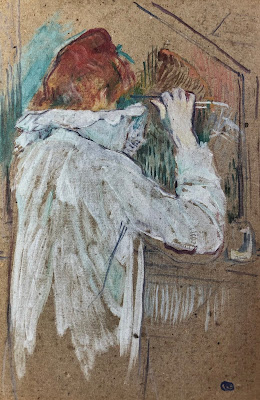 |
| "Hydrangea Twosome" 16 x 12, Oil on Linen (c) Lesley Powell 2019 |
It's that magic time, when one year is drawing to a close and a new one is just about to dawn. I always relish this interval, especially the week between Christmas and New Years. Much of the world almost seems to stand still. I like to reflect on things that have grabbed my attention during the past twelve months, which I hope to implement in my work over the coming twelve months. Here are a few of those "Guiding Words" that I have written in my sketch book this year. All are mantras for the New Year. Ideals to strive for!
 |
| "Paris Pont 12 x 8, Oil on Cartón (c) Lesley Powell 2019 (SOLD) |
"Life is so compacted, intricate and unknowable. I try to break it down, capture some of that confusion, hoping to simplify but contain all that I have observed. I try very hard to leave out as much as I can, until it screams at me to put it in. I want the viewer's brain to say the unsaid." --Ishbel Myerscough
 |
| "Atmospheric Hills" 6 x 12, Oil on Linen (c) Lesley Powell 2019 |
"The draftsman navigates between statement and suggestion to create movement and life--as in literature, descent into too much description kills the image." --John Lessore
 |
| "Murs from Below" 10 x 16, Oil on Linen (c) Lesley Powell 2019 (SOLD) |
"There is no beauty without empty space. There is no music without silence." --Dominique Loreau
 |
| "Living Room Wing Chair" 12 x 8, Oil on Linen (c) Lesley Powell 2019 |
"One only does well by being succinct, and one can only be succinct by seeing little." --Edgar Degas















































